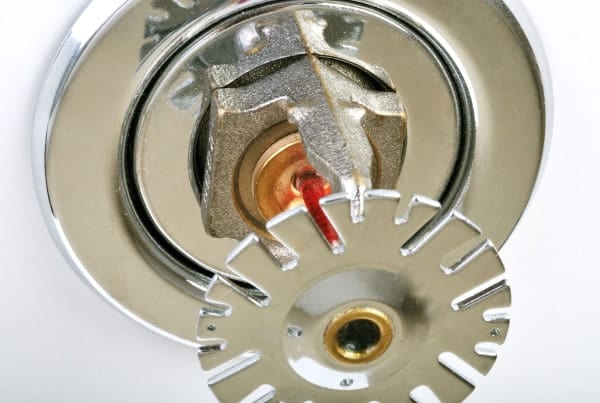Mismatched, missing, and damaged escutcheons could allow fires to spread
The metal fixtures mounted between fire sprinklers and adjacent walls or ceilings may seem like the last thing building owners and managers need to worry about. But when they’re damaged or missing — or the wrong size is allowed to remain in service — fire sprinklers may activate late, allowing a fire to spread. Those parts, called escutcheons, are specifically engineered for a close fit between the wall or ceiling and the sprinkler. This guide explains why these parts matter so much, what size fire sprinkler escutcheon you need, and how you can consistently choose a proper replacement.
Escutcheons enable fire sprinklers to activate on time
Fire sprinkler escutcheons are sometimes called various names — trim plates, trim rings, wall plates, sleeves, design rings, beauty rings, and extenders, among others. They cover the gap in the wall or ceiling where a fire sprinkler is installed.
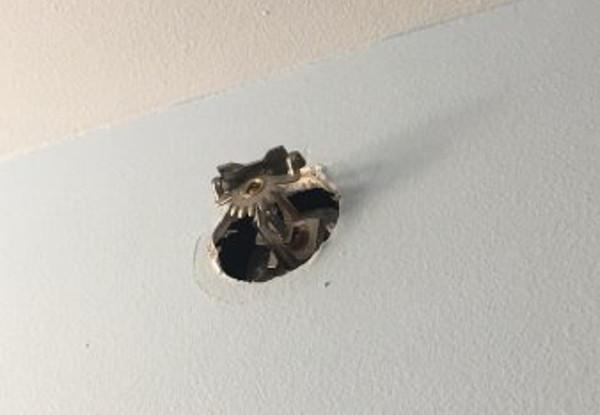
Most escutcheons come in recessed, flat, and adjustable 401 styles. Each covers the gap between fire sprinklers and adjacent walls or ceilings, but at different depths. Recessed escutcheons are designed for sprinklers connected to piping behind the wall or ceiling line; flat escutcheons fit sprinklers that are flush; and adjustable 401 (“skirt and cup”) escutcheons cover the gap for sprinklers that protrude.
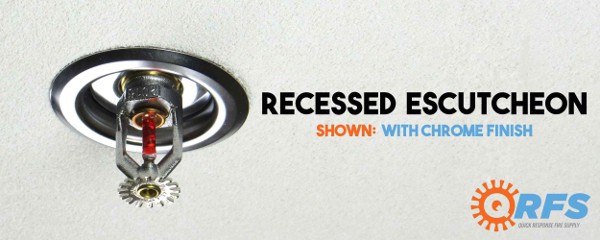
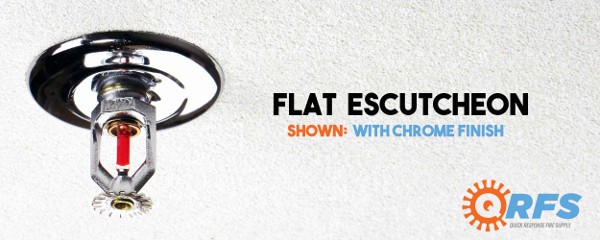
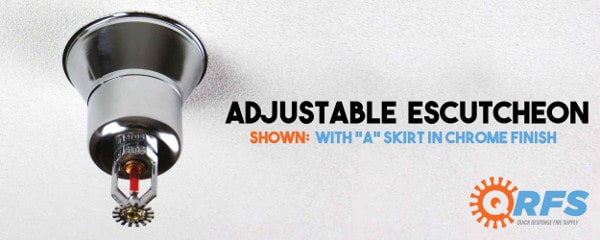
For a complete guide to escutcheon selection, read our article: “Which Fire Sprinkler Escutcheon Do I Need?”
Escutcheons are often confused with fire sprinkler cover plates. But unlike escutcheons, cover plates are specifically designed for “concealed sprinklers.” They hide the sprinkler’s head, providing a degree of tamper and dust-proofing as well as a cleaner aesthetic. Cover plates are heat-sensitive, designed with metal components that detach at a rated temperature which is usually about 20 degrees F lower than a sprinkler head’s deployment temperature.
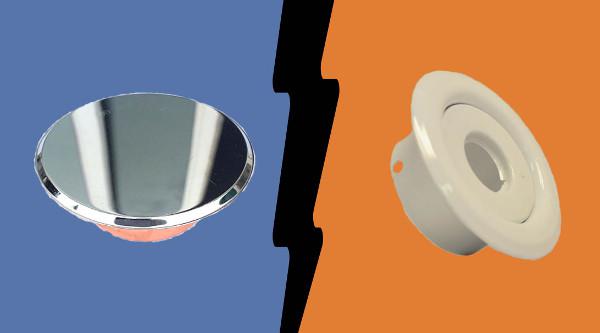
A fire sprinkler cover plate (left) covers the entire sprinkler. The sprinkler head is exposed with an escutcheon (right). Our side-by-side comparison of fire sprinkler covers and escutcheons is available here.
A properly-functioning escutcheon limits airflow into adjacent walls or ceilings. The reason: fire sprinklers are heat-activated, and if heat bypasses a sprinkler, the sprinkler may not discharge soon enough to effectively control a fire. In addition, escutcheons can even impact the deployment of smoke alarms. If the smoke escapes through gaps in the ceiling or wall, it may delay an alarm’s detector.
In these situations, seconds count. The Ready Campaign, a Department of Homeland Security disaster-preparedness initiative, estimates that a two-story home may be engulfed in flames just five minutes after ignition begins, while other estimates say even fewer. Modern homes (at least the ones without sprinkler systems) are, in some ways, at greater risk than the homes of decades past.
Keith Mulvihill of This Old House, a Connecticut-based home improvement media group, comments that house fires have become more devastating as synthetic materials have become more common. Consumer Safety Director John Drengenberg of Underwriters Laboratory estimates that occupants have only two or three minutes to escape from a home with mostly synthetic-based furnishings — a far cry from the 14 to 17 minutes available decades earlier.
Damaged, altered, or missing escutcheons are an all-too-common fire code failure
Missing escutcheons are surprisingly common. The American Society for Healthcare Engineering reports that a 2014 survey of hospital health and safety compliance identified problems with escutcheons as hospitals’ second-most frequent violation of life safety standards involving fire sprinklers. Massachusetts General Hospital in Boston, MA reiterated the importance of compliance in a 2015 response to its own fire code violations, noting that “[t]hese building features aim to contain smoke and/or fire so that patients may be protected in place or evacuated along a safe route if need be.”
As always, fire codes and specifically required fire protection system maintenance are determined by local and state governments — but authorities having jurisdiction (AHJs) rely on model codes that reference standards published by the National Fire Protection Association (NFPA). And NFPA 25: Standard for the Inspection, Testing, and Maintenance of Water-Based Fire Protection Systems spells out when and how sprinklers and their escutcheons (or cover plates) should be replaced.
From the 2023 Edition of NFPA 25:
5.2.1.1.1* Any sprinkler that shows signs of any of the following shall be replaced:
(1) Leakage
(2) Corrosion detrimental to sprinkler performance
(3) Physical damage
(4) Loss of fluid in the glass bulb heat-responsive element
(5) Loading detrimental to sprinkler performance
(6) Paint, other than that applied by the sprinkler manufacturer, detrimental to sprinkler performance5.2.1.1.5 Escutcheons and coverplates for recessed, flush, and concealed sprinklers shall be replaced with their listed escutcheon or coverplate if found missing during the inspection.
5.2.1.1.5.1 Where the listed escutcheon or coverplate from a listed assembly is missing and is no longer commercially available, the sprinkler shall be replaced.
5.2.1.1.6 Escutcheons for pendent sprinklers that are not recessed, flush, or concealed shall not be required to be replaced if found missing during the inspection.
In short, missing, damaged, rusted, or painted escutcheons need to be replaced with the same manufacturer’s escutcheon. If a match can’t be located, the entire assembly — both sprinkler head and escutcheon — needs to be replaced with a model with comparable characteristics.
For a deeper look at requirements for inspections of escutcheons and other fire sprinkler components, read our multi-part series.
When replacing escutcheons, it’s best to look at the sprinkler’s data sheet. Getting the right size is tricky. An escutcheon’s size shouldn’t be taken from any measurement on any part of an escutcheon itself. Measuring the diameter of the escutcheon opening will produce a result that’s too big. And unless you’ve got a spare escutcheon handy, measuring one would require removing it from service — most models are installed with the sprinkler heads and can’t be removed without detaching the sprinklers or cutting the escutcheons off entirely.
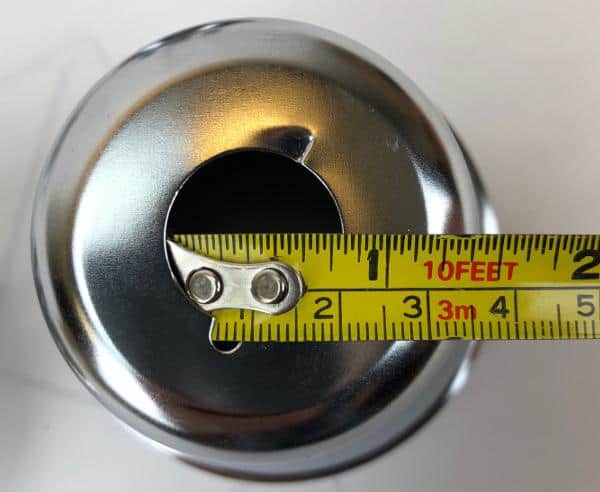
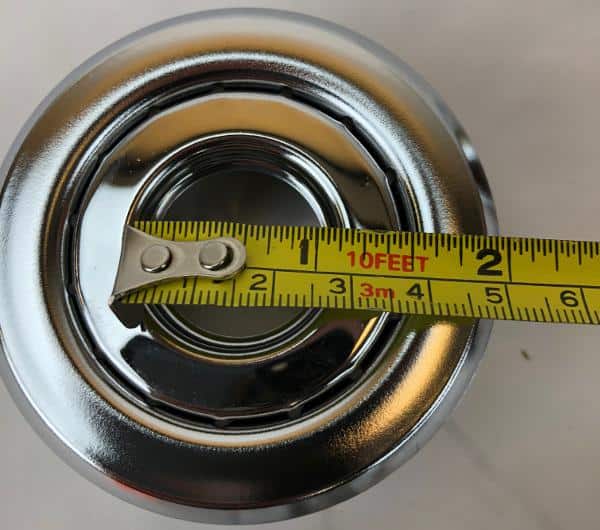
An escutcheon’s size is related to a sprinkler’s K-Factor, or orifice size, and all sprinklers manufactured after December 31st, 2000 have a sprinkler identification number, or SIN. This SIN is made up of one or two letters followed by three or four numbers — and it provides a straightforward way to determine the exact escutcheon size needed.
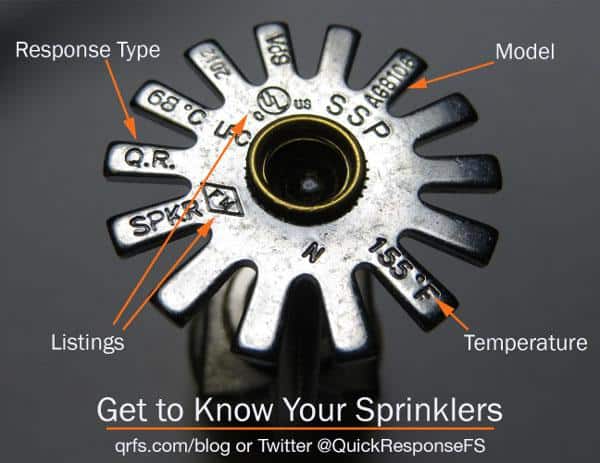
To determine your escutcheon size using the SIN:
1) Locate your SIN on the sprinkler’s deflector plate.
2) If you have the sprinkler’s data sheet, such as the ones conveniently provided on QRFS’s sprinkler product pages or the manufacturer’s product pages for current models, skip ahead to step 6. Otherwise …
3) Visit the Underwriters Laboratory (UL) SIN database.
4) Enter the four-to-six-character SIN located on the sprinkler’s deflector plate in the Sprinkler Identification Number field. In this case, we’ll start with an example SIN of V2703.
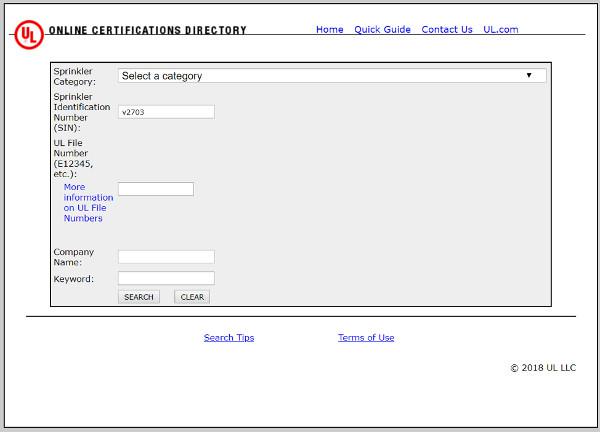
5) The page returns links with the manufacturer’s sprinkler data. Click on the link that’s most appropriate to your location. In the example below, those in the United States should choose the top-most link:
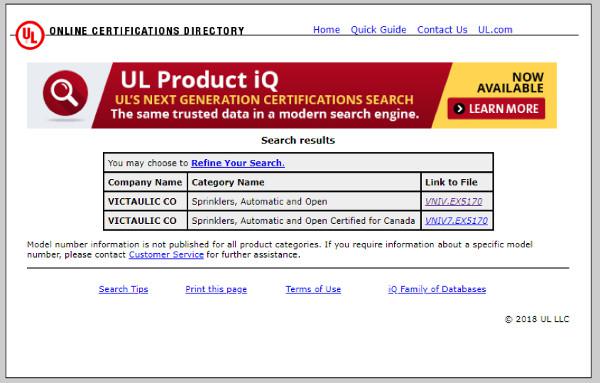
6) Look at the datasheet to see if the manufacturer lists specific escutcheon models that are compatible with your sprinkler. For example, the below table from a datasheet for a VK3021 quick response pendent sprinkler lists various approvals from different safety rating bodies (green highlights), and those codes pertain to specifically approved Viking escutcheon models (E-1, E-2, E-3, NP-2, NP-3, or “Viking Standard Surface Mounted Escucteons”). These models come in standard sizes, taking the guesswork out of choosing a size:
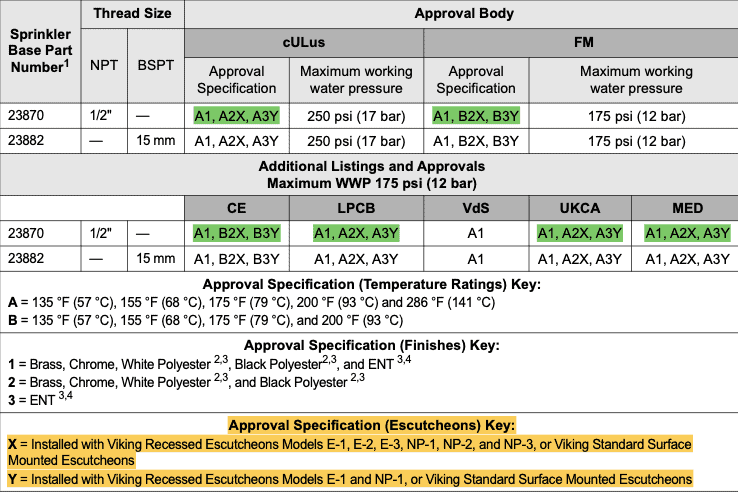
7) If you don’t have a list of specifically compatible escutcheons, locate the K-factor for your SIN on a product page or the sprinkler’s datasheet; some datasheets cover a range of sprinklers and provide tables showing this information. In the below example from Victaulic, each sprinkler listed has a K-factor of 5.6:

8) Match your K-Factor (and implied connection size) to a given escutcheon size using the table below. Often, the K-Factor is either 5.6 or 8.0. Fire sprinkler heads with a 5.6 K-Factor have a ½” orifice and sprinkler heads with an 8.0 K-Factor have a ¾” orifice:
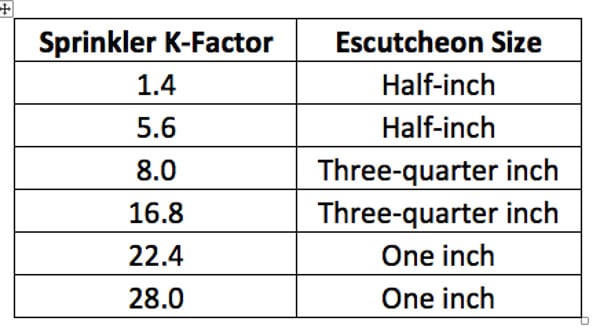
This table lists selected common escutcheon sizes for a given K-Factor.
If your sprinklers are really old and don’t have a SIN, you’ll need to find another way to identify the sprinkler’s model and K-Factor — or replace both the sprinkler head and escutcheon with a new assembly.
A good rule of thumb: If the sprinkler is older than 2001 and doesn’t have a SIN, it’s going to be ½” the vast majority of the time. This is the size that’s found in most common businesses, with larger escutcheons tending to show up in big manufacturing plants, storage facilities, and similar applications where there is a higher hazard.
Also, make sure to understand that replacing a normal escutcheon can require draining a system and taking it out of service, “since the escutcheon opening is smaller than the sprinkler head itself.” To avoid the inconvenience and costs associated with this procedure, “split” escutcheons that are divided into two parts are available, enabling an easier retrofit. You still have to cut the old escutcheon away, however.
If you need to buy a replacement for a missing, ill-fitting, or damaged fire sprinkler escutcheon, take a look at QRFS’ selection.
And if you still have questions, add a comment below, give us a call at 888.392.3362, or fill out our contact form and we’d be happy to assist.
This blog was originally posted at QRFS.com/blog. If this article helped you, check us out at Facebook.com/QuickResponseFireSupply or Twitter @QuickResponseFS.


